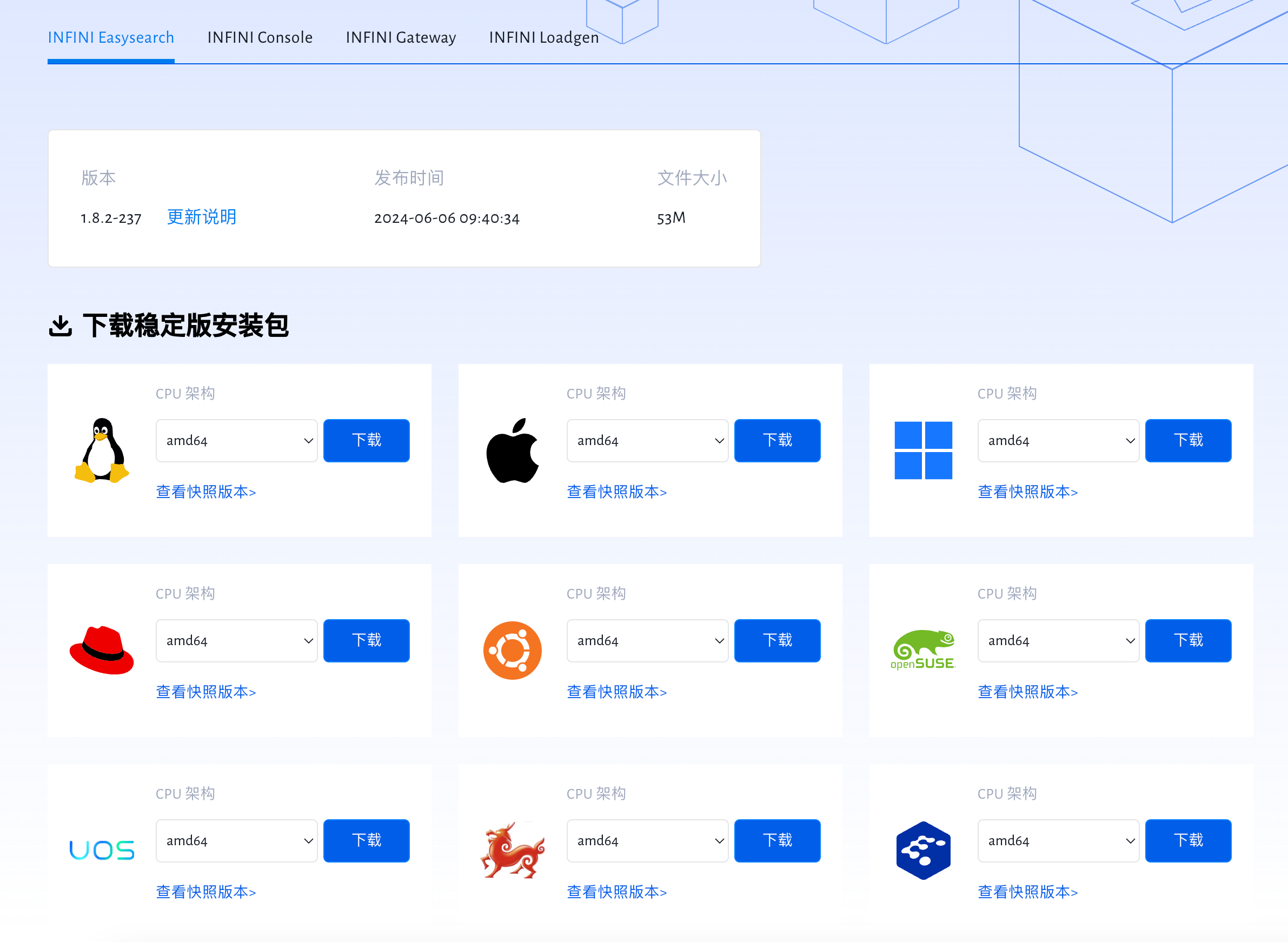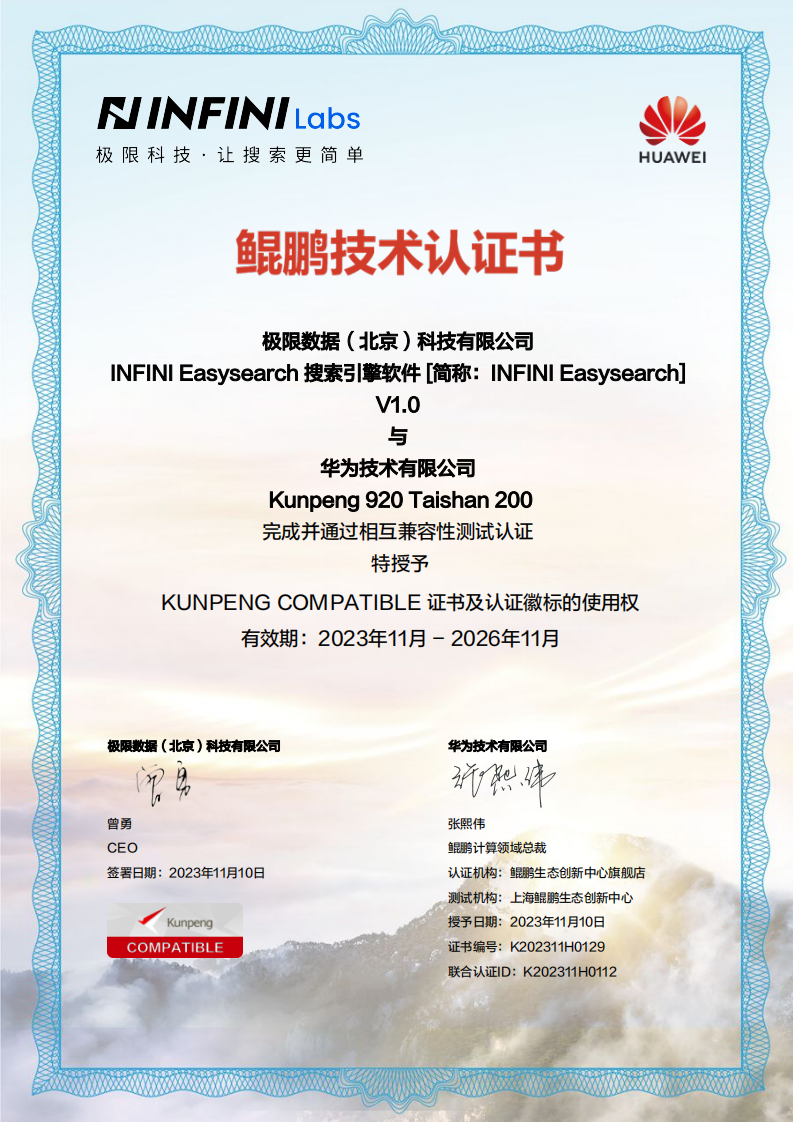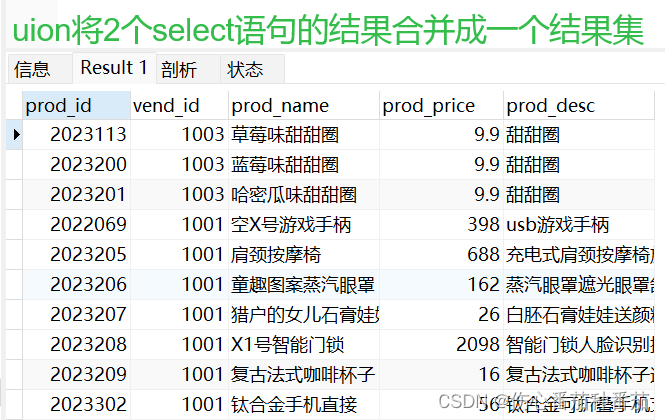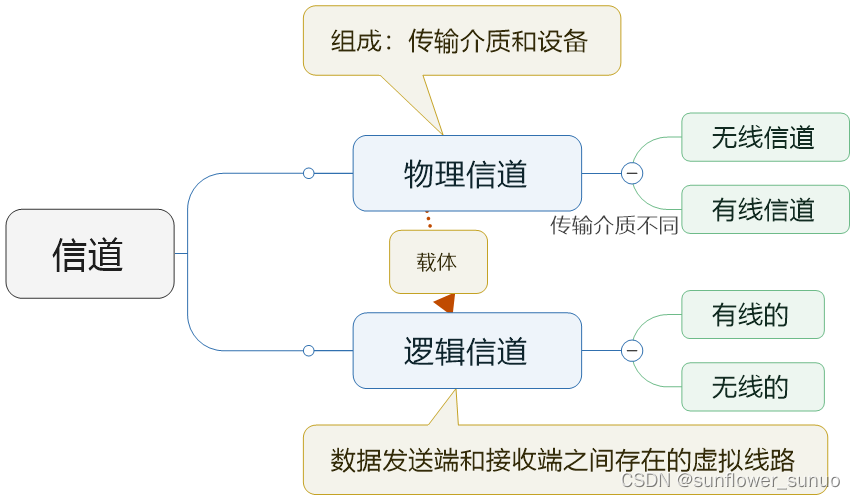随着数据分析需求的不断增长,能够高效地查询和分析大数据集变得越来越重要。Elasticsearch作为一种强大的分布式搜索和分析引擎,被广泛应用于各种场景。EasySearch 支持原生 Elasticsearch 的 DSL 查询语法,确保原业务代码无需调整即可无缝迁移。同时,EasySearch还支持 SQL 查询,为熟悉 SQL 的开发人员提供更加便捷的数据分析方式。此外,EasySearch 兼容 Elasticsearch 的 SDK 和现有索引存储格式,支持冷热架构和索引生命周期管理,确保用户能够轻松实现数据的无缝衔接。
Elasticsearch Python客户端提供了一种简便的方法,使得开发者可以通过DSL、SQL语法对Elasticsearch索引进行查询。同时,Elasticsearch Python客户端还提供了高级功能如批量操作API。本文将详细介绍如何安装和使用Elasticsearch Python客户端,以便在Python应用程序中对Elasticsearch执行DSL和SQL查询。
1. 安装 Elasticsearch Python 客户端
要使用Elasticsearch Python客户端,首先需要通过pip进行安装。打开终端或命令提示符,并运行以下命令:
pip install elasticsearch==7.13.1
如果使用默认版本安装,会安装8.x的依赖,可能会报错 elasticsearch.UnsupportedProductError: The client noticed that the server is not Elasticsearch and we do not support this unknown product.
由于Elasticsearch 7.10.2以后变更了许可模式,引入了 Server Side Public License (SSPL) 和 Elastic License,很多基于Elasticsearch 7.10.2分支出来的搜索引擎需要使用7.x版本的SDK和agent,比如Beats全家桶。

这是一个获取集群信息的demo,使用es.cluster.health() 调用 Elasticsearch 集群的健康检查API,返回集群的健康状态。
由于使用了自签名证书,所以在初始化时加上 verify_certs=False 参数,同时使用 warnings.filterwarnings("ignore") 设置 Python 的警告系统,忽略所有发出的警告。这在生产代码中通常不推荐,因为它会隐藏潜在的问题,但在开发或测试环境中,如果警告信息太多干扰调试,可能会暂时使用。
import urllib3
import elasticsearch
from elasticsearch import Elasticsearch
import warnings
from pprint import pprint
# 禁用所有警告
warnings.filterwarnings("ignore")
print(elasticsearch.VERSION)
# 禁用警告
urllib3.disable_warnings(urllib3.exceptions.InsecureRequestWarning)
url = "https://ip:9200/"
user_passwd = ('user', 'passwd')
# 建立连接
es = Elasticsearch(
[url],
http_auth=user_passwd,
verify_certs=False,
)
# 检查集群健康状态
health = es.cluster.health()
pprint(health)
2. 准备示例数据
在进行查询之前,我们需要在 EasySearch 中创建一些示例数据。
# 定义示例数据
sample_data = [
{"index": {"_index": "my_index"}},
{"field": "value1", "another_field": 10},
{"index": {"_index": "my_index"}},
{"field": "value2", "another_field": 20},
{"index": {"_index": "my_index"}},
{"field": "value3", "another_field": 30},
{"index": {"_index": "my_index"}},
{"field": "bulk_value1", "another_field": 100},
{"index": {"_index": "my_index"}},
{"field": "bulk_value2", "another_field": 200},
{"index": {"_index": "my_index"}},
{"field": "bulk_value3", "another_field": 300}
]
# 批量插入示例数据
response = es.bulk(body=sample_data)
print(response)
3. 使用 REST API 进行查询
REST API 是与 EasySearch 进行通信的常用方式。通过 REST API,开发者可以发送 HTTP 请求来执行各种操作,包括索引文档、搜索数据等。以下示例展示了如何在 Python 中执行 REST 查询。
由于是REST API,我们可以先使用Postman进行测试。

我们可以看到HTTP端点可以正常返回,然后就可以使用编程方式进行访问了:
import requests
from requests.auth import HTTPBasicAuth
from pprint import pprint
url = "https://ip:9200/"
user_passwd = ('user', 'passwd')
# 构建查询参数
query = {
"query": {
"match": {
"field": "value1"
}
}
}
dsl = f"{url}/my_index/_search"
response = requests.get(dsl, json=query, auth=HTTPBasicAuth(*user_passwd), verify=False)
pprint(response.json())
# 处理查询结果
if response.status_code == 200:
results = response.json()
for hit in results['hits']['hits']:
print(hit)
else:
print(f"Error: {response.status_code}")
4. 使用 Elasticsearch Python SDK 进行 DSL 增删改查
DSL(Domain-Specific Language)是 Elasticsearch/EasySearch的原生查询语言,允许用户构建复杂的查询。以下示例展示了如何在 Elasticsearch Python SDK 中执行 DSL 查询。
# 构建 DSL 查询
dsl_query = {
"query": {
"match": {
"field": "value1"
}
}
}
# 执行 DSL 查询
response = es.search(index="my_index", body=dsl_query)
results = response.get("hits")
# 处理查询结果
if results:
for hit in results['hits']:
print(hit)
else:
print(f"Error: {response.status_code}")
插入数据
如果不指定document ID,那么随机生成一个ID并写入。
doc = {"field": "value4", "another_field": 9999}
response = es.index(index="my_index", body=doc)
print(response)
更新数据
指定ID为1来手动更新索引:
doc = {"field": "value4", "another_field": 9999}
response = es.index(index="my_index", body=doc, id=1)
print(response)
更新单条数据
# 更新单条数据
update_body = {"doc": {"another_field": 50}}
response = es.update(index="my_index", id="1", body=update_body)
pprint(response)
删除数据
# 删除单条数据
response = es.delete(index="my_index", id="1")
pprint(response)
5. 使用 Elasticsearch Python SDK 进行 SQL 查询
创建客户端实例后,我们可以使用 sql 方法执行 SQL 查询。以下示例展示了如何执行一个简单的 SELECT 查询。
# 执行 SQL 查询
query_sql = {
"query": "SELECT * FROM my_index"
}
res = es.sql.query(body=query_sql)
pprint(res)
6. 使用 Elasticsearch Python SDK 进行批量操作
批量操作 API 允许用户一次性对多个文档进行创建、更新或删除操作,极大提高了操作效率。以下示例展示了如何使用 Elasticsearch Python SDK 中的批量操作。
批量插入数据
# 定义批量插入数据
bulk_data = [
{"index": {"_index": "my_index"}},
{"field": "bulk_value1", "another_field": 100},
{"index": {"_index": "my_index"}},
{"field": "bulk_value2", "another_field": 200},
{"index": {"_index": "my_index"}},
{"field": "bulk_value3", "another_field": 300}
]
# 执行批量插入操作
response = es.bulk(body=bulk_data)
pprint(response)
批量更新数据
# 定义批量更新数据
bulk_update_data = [
{"update": {"_id": "1", "_index": "my_index"}},
{"doc": {"another_field": 110}},
{"update": {"_id": "2", "_index": "my_index"}},
{"doc": {"another_field": 220}}
]
# 执行批量更新操作
response = es.bulk(body=bulk_update_data)
pprint(response)
批量删除数据
# 定义批量删除数据
bulk_delete_data = [
{"delete": {"_id": "1", "_index": "my_index"}},
{"delete": {"_id": "2", "_index": "my_index"}}
]
# 执行批量删除操作
response = es.bulk(body=bulk_delete_data)
print(response)
7. 使用 Elasticsearch Python SDK 进行索引级别操作
Elasticsearch Python SDK 还支持索引级别的操作,如创建索
引、删除索引和检查索引是否存在。以下是一些示例:
创建索引
# 创建索引
index_body = {
"settings": {
"number_of_shards": 1,
"number_of_replicas": 0
},
"mappings": {
"properties": {
"field": {"type": "text"},
"another_field": {"type": "integer"}
}
}
}
response = es.indices.create(index="new_index", body=index_body)
pprint(response)
删除索引
# 删除索引
response = es.indices.delete(index="new_index")
pprint(response)
检查索引是否存在
# 检查索引是否存在
response = es.indices.exists(index="new_index")
pprint(response)
8. 总结
Elasticsearch Python SDK 提供了一种简便的方法,使得开发者可以通过熟悉的 DSL 和 SQL 语法对 EasySearch 进行查询。同时,SDK 还提供了一些高级功能如批量操作 API,使得查询和数据操作更加高效。开发者可以更灵活地构建复杂查询,充分利用 EasySearch 的强大功能。无论您是执行简单的 SQL 查询,还是构建复杂的 DSL 和 REST 查询,Elasticsearch Python SDK 都能满足您的需求。如果您还未尝试过这个强大的工具,现在就安装并使用它吧!通过 EasySearch,您将能够更加高效地处理和分析大数据集,为您的数据驱动决策提供有力支持。







































![[C++] 模拟实现list(二)](https://i-blog.csdnimg.cn/direct/85e4d96d18144ed5900560ac3288f9e8.jpeg)




